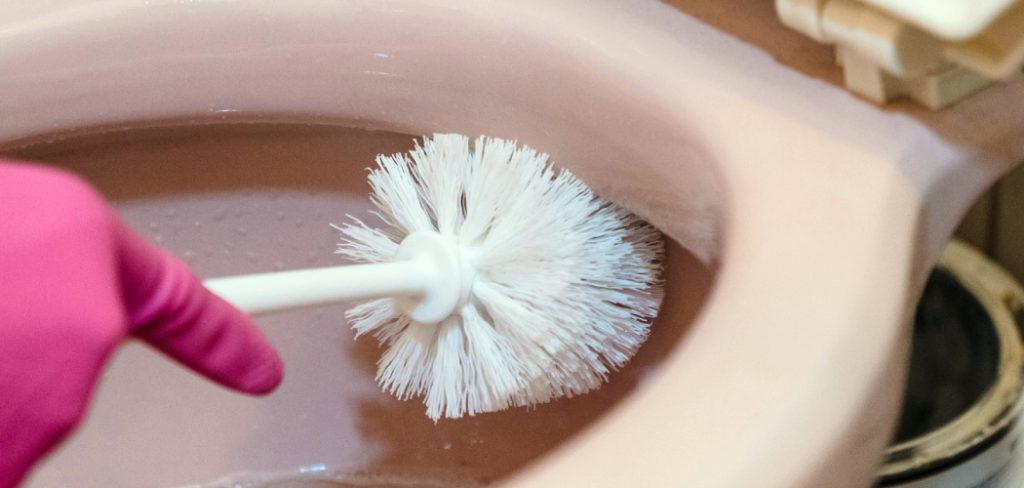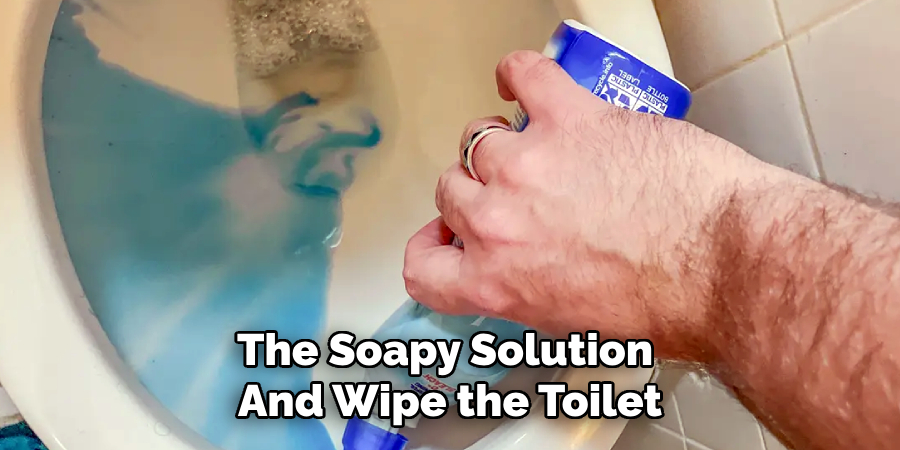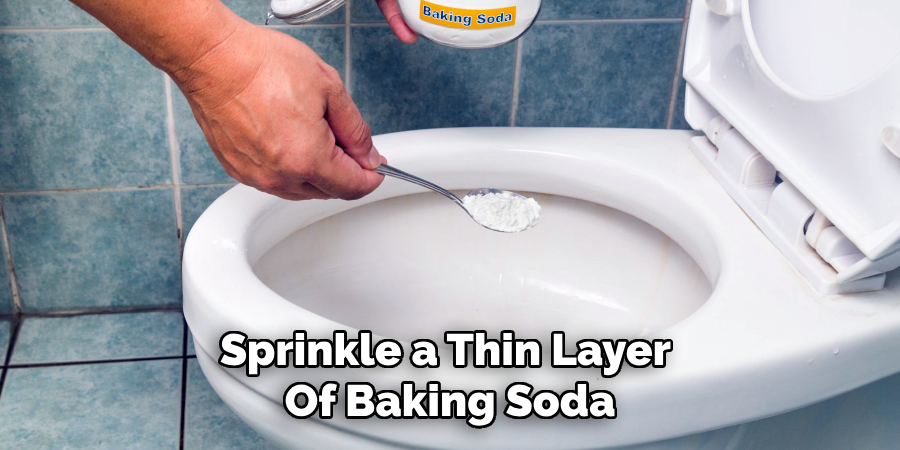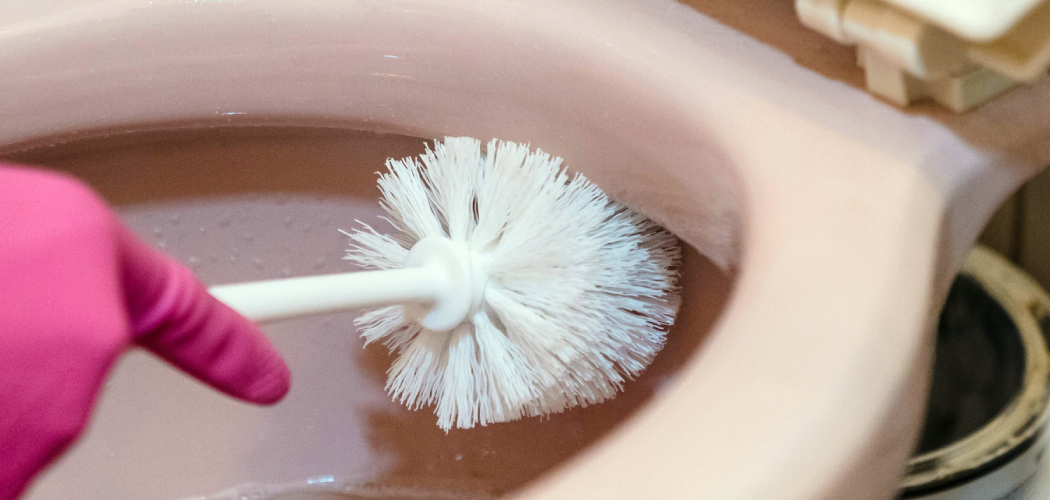Cleaning a toilet lid may seem like a simple task, but doing it properly ensures hygiene and prevents the buildup of germs and stains. With the right tools and techniques, you can keep your toilet lid spotless and sanitized, contributing to a cleaner, healthier bathroom environment. This guide will walk you through how to clean a toilet lid properly.

Importance of Keeping a Toilet Lid Clean
A clean toilet lid is crucial for maintaining overall bathroom hygiene. The lid can harbor bacteria, germs, and other contaminants that may pose health risks if left uncleaned. Regularly cleaning the toilet lid not only prevents unpleasant stains and odors but also reduces the chances of spreading germs to other parts of the bathroom. A sanitized toilet lid contributes to a more pleasant environment, creating a space that feels fresh and inviting for household members and guests alike. By prioritizing its cleanliness, you ensure a healthier and more comfortable living space.
Issues Caused by Neglecting Toilet Lid Cleaning
Failing to clean the toilet lid regularly can lead to several problems that impact both hygiene and comfort. Over time, dirt, grime, and bacteria can accumulate on the surface, creating visible stains and unpleasant odors.
These unsanitary conditions may contribute to the spread of harmful germs and increase the risk of illness, particularly in households with young children or elderly individuals who may have weaker immune systems. Additionally, a neglected toilet lid can become discolored or damaged due to the buildup of residue, making it harder to restore its original appearance. This negligence not only affects the cleanliness of the bathroom but also creates a less welcoming environment for everyone who uses the space. Regular maintenance is key to avoiding these issues and keeping your bathroom looking and feeling fresh.
10 Methods How to Clean a Toilet Lid Properly
1. Start with a Basic Soap and Water Solution
For routine cleaning, warm water and a mild soap provide an effective and gentle solution. Fill a bucket or bowl with warm water and add a few drops of dish soap or liquid hand soap. Mix until it becomes sudsy. Dip a soft sponge or microfiber cloth into the soapy solution and wipe the toilet lid thoroughly. Pay close attention to the edges and hinges, as these areas tend to collect grime. After scrubbing, rinse the surface with clean water to remove soap residue, and dry it using a clean, dry cloth. Regular cleaning with this method keeps the lid free from everyday dirt and prevents the buildup of bacteria.

2. Tackle Stubborn Stains with a Vinegar Solution
White vinegar is a natural cleaning powerhouse that removes stains, disinfects, and deodorizes surfaces. To clean your toilet lid effectively, mix equal parts white vinegar and water in a spray bottle. Spray the solution generously on the lid, ensuring it covers all areas, especially any stained or discolored spots. Let it sit for 5–10 minutes to break down dirt and mineral deposits. Then, use a non-abrasive sponge or soft cloth to scrub the lid gently. Rinse thoroughly with warm water and dry. This method is especially useful for tackling yellowing or water stains on lighter-colored lids.
3. Use Baking Soda as a Gentle Abrasive Cleaner
Baking soda is an excellent option for dealing with tougher stains and grime without risking scratches. Sprinkle a thin layer of baking soda evenly over the lid, then spray or drizzle a small amount of water to create a paste. Allow the paste to sit for a few minutes to loosen the dirt. Use a soft-bristled brush or sponge to scrub the surface gently, focusing on problem areas. Rinse thoroughly with warm water and wipe dry with a microfiber cloth. Baking soda not only cleans but also deodorizes, leaving the lid fresh and spotless.

4. Disinfect Deeply with a Bleach Solution
For a thorough disinfection, bleach is a strong and reliable option, particularly in bathrooms where bacteria thrive. Prepare a solution of one part bleach to ten parts water. Dip a sponge or cloth into the solution and apply it to the lid, ensuring you cover the entire surface, including the hinges. Allow the bleach solution to sit for 5–10 minutes to effectively kill germs. Rinse thoroughly with warm water to remove any traces of bleach, and dry with a clean towel. Use this method cautiously and ensure proper ventilation while handling bleach to avoid harmful fumes.
5. Hydrogen Peroxide for a Safer Disinfectant Alternative
If you prefer a gentler disinfectant, hydrogen peroxide is a great substitute for bleach. Pour hydrogen peroxide directly onto a cloth or sponge and wipe the lid. Allow the solution to sit for 10 minutes to ensure bacteria and germs are effectively neutralized. Rinse the lid with water and dry it thoroughly. Hydrogen peroxide is non-toxic and safe for most materials, making it a versatile option for regular cleaning.
6. Deep-Clean Hinges and Crevices with a Toothbrush
The hinges and crevices of the toilet lid often accumulate hidden dirt and grime that regular wiping cannot reach. Use an old toothbrush dipped in your chosen cleaning solution—soap, vinegar, or hydrogen peroxide—to scrub these areas. Work the bristles into the tight spaces, moving in small circular motions to dislodge debris. For even more effective cleaning, consider removing the lid entirely, if possible, to access these hard-to-reach spots. Rinse thoroughly and reattach the lid once clean.

7. Polish the Lid with a Microfiber Cloth
Once the lid is cleaned, polishing it ensures a streak-free and glossy finish. Microfiber cloths are ideal for this task as they are highly absorbent and do not leave lint behind. After cleaning and drying, use the microfiber cloth to buff the lid gently in circular motions. This step enhances the appearance of glossy plastic or wood finishes and gives the lid a fresh, polished look. Regular polishing also prevents water spots and helps maintain the surface over time.
8. Eliminate Odors with Lemon Juice
To remove lingering odors and leave a fresh scent, use the natural cleaning power of lemon juice. Squeeze fresh lemon juice onto a soft cloth or sponge and apply it to the lid. For tougher stains or grime, sprinkle a small amount of baking soda onto the lid first, then scrub with the lemon juice. The natural citric acid in lemons breaks down dirt and neutralizes odors, leaving the lid clean and refreshed. Rinse with warm water and dry thoroughly.
9. Use Commercial Cleaners for Convenience
If you prefer pre-made solutions, commercial bathroom cleaners are widely available and designed to tackle tough dirt, stains, and bacteria. Select a product labeled as safe for your toilet lid material (plastic, wood, or composite). Follow the manufacturer’s instructions, typically spraying the cleaner onto the surface and wiping it away with a cloth or sponge. Many of these products also contain antibacterial agents, making them an excellent choice for a quick and effective clean.

10. Prevent Buildup with Daily Maintenance
Maintaining a clean toilet lid is easier when you incorporate daily upkeep into your routine. Keep a pack of disinfectant wipes or baby wipes in the bathroom for a quick wipe-down after each use. Pay special attention to the edges and hinges. By cleaning the lid regularly, you can prevent the accumulation of dirt and bacteria, making deep cleaning less frequent and more manageable. This method is perfect for busy households and ensures the bathroom stays fresh and hygienic.
Maintenance and Upkeep
To ensure your toilet lid remains clean and hygienic over time, consistency is key. Begin by establishing a regular cleaning schedule, ideally performing a deep clean once a week and light maintenance daily. Use disinfectant wipes or a damp cloth with mild soap to quickly remove dust, dirt, or spills as they appear. Always check for signs of wear or damage, such as cracks in the lid or hinges that may need repair or replacement. For households with high usage, consider adding a protective coating or using specific cleaning products designed to prevent discoloration and buildup over time.
Safety Considerations
When cleaning your toilet lid, it is important to follow safety precautions to avoid accidents or harm. Always wear gloves to protect your skin from harsh chemicals or cleaning solutions, especially when using bleach or hydrogen peroxide. Ensure proper ventilation in the bathroom by opening windows or using a fan to prevent the buildup of fumes from strong cleaning agents. Avoid mixing cleaning products, such as bleach and ammonia, as this can create toxic gases. Keep all cleaning supplies out of reach of children and pets to prevent accidental ingestion or exposure. Additionally, when handling sharp tools or removing hinges, exercise caution to avoid injury.
Conclusion
A clean toilet lid is not only aesthetically pleasing but also essential for maintaining a healthy bathroom environment. These 10 elaborated methods provide a comprehensive guide to effectively clean and maintain a toilet lid, addressing both surface stains and hidden grime. From natural solutions like vinegar and baking soda to commercial cleaners and disinfectants, you have a variety of options to suit your preferences and needs. Thanks for reading, and we hope this has given you some inspiration on how to clean a toilet lid properly!

